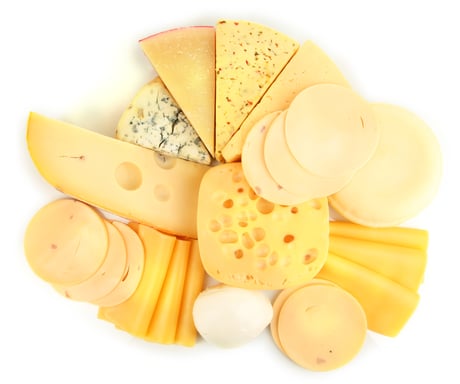Ultrasonics applications in the food industry

The versatile use of ultrasound in the food industry: technological innovations for greater efficiency and quality
The food industry is constantly on the lookout for technologies that not only optimize production processes, but also improve the quality of the end products. In this context, the use of ultrasound plays a decisive role. This innovative technology has proven itself in various areas, such as cutting, packaging, sealing, cleaning and leak testing of bottles containing carbonated beverages. Ultrasound is also used for fermenting dough, maturing whiskey and even washing lettuce and vegetables.
1. Precise cutting for optimum product quality
The use of ultrasound when cutting food offers precision and efficiency. Ultrasonic knives generate high-frequency vibrations that result in food being cut with minimal deformation and without bruising. This is particularly important for delicate foods such as cheese or pasta. The precise cutting not only helps to improve product quality, but also reduces waste and enables faster production speeds.
Learn more & get a tutorial:
https://go.weber-ultrasonics.com/en/food-cutting
2. Efficient packaging and sealing
The use of ultrasonic technology in the packaging process offers several advantages. For example, ultrasound can be used to seal packaging without the use of heat. This is particularly important for sensitive foodstuffs that could be damaged by heat. The precise and fast sealing ensures a longer shelf life for products and minimizes the risk of spoilage.
3. Cleaning of utensils
Cleaning utensils is crucial for food safety and quality. Ultrasonic cleaning enables thorough cleaning, even of hard-to-reach areas. The sound waves create micro-bubbles that remove dirt from surfaces without damaging them. This results in hygienically clean utensils, which meets the high standards in the food industry.
Click here for the whitepaper:
https://go.weber-ultrasonics.com/en/whitepaper-always-up-to-date/
4. Leak testing of beverage bottles
The safety of packaged food is the top priority. It must therefore be ensured that no substances, germs or similar can penetrate the bottles. For this purpose, the bottles are subjected to ultrasound during the production process after filling and capping. In the case of leaking closures, the filled liquid foams out and the bottles in question can be easily localized and removed from production.
5. Dough fermentation
In the bakery industry, fermentation plays a crucial role in developing the taste and texture of dough. The use of ultrasound accelerates the fermentation process by breaking down the yeast cell walls and promoting the release of enzymes. This leads to improved dough quality and shorter production times.
6. Maturing whiskey with ultrasound
The traditional maturation of whiskey in wooden barrels can be time-consuming. The use of ultrasound speeds up this process by encouraging interaction between the whiskey and the wood. This leads to faster flavor development and allows for more flexible control of the maturation process..
7. Washing lettuce and vegetables
Ultrasound can also be used for washing salad and vegetables. The gentle sound waves efficiently remove pesticide residues and impurities without affecting the structure of the food. This not only ensures higher quality and freshness of the products, but also saves water.
Conclusion: Overall, the versatile use of ultrasound in the food industry shows how this innovative technology not only helps to increase the efficiency of production processes, but also to improve the quality of the end products. Continuous research and development in this field promise further exciting applications that will shape the food industry in the future.
Back to Blog page









